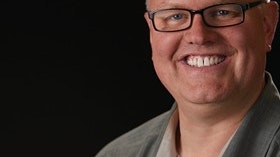Homepage
•
Learning Library
•
Blog
•
Change at scale: The 1:1 movement in Iowa
Expand breadcrumbs
Expand breadcrumbs
- Learning Library
- Blog
- Change at scale: The 1:1 movement in Iowa
- Homepage
- •
- Learning Library
- •
- Blog
- •
- Change at scale: The 1:1 movement in Iowa
Change at scale: The 1:1 movement in Iowa
By Scott McLeod
October 1, 2017








